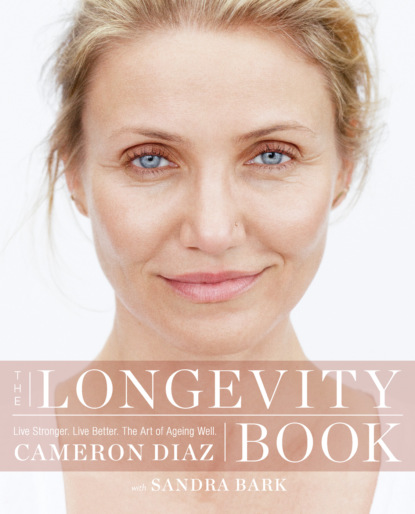По всем вопросам обращайтесь на: info@litportal.ru
(©) 2003-2024.
✖
The Longevity Book: Live stronger. Live better. The art of ageing well.
Автор
Год написания книги
2018
Настройки чтения
Размер шрифта
Высота строк
Поля
Even in our earliest years, our environments influence our health. Growing up in a household that is very stressful, for example, will affect your genes differently than if you are raised in a home that is calm and secure. Alexandra Crosswell, a research scientist at the University of California, San Francisco, whom we saw give a rousing lecture about her work, has been studying a group of breast-cancer patients to investigate the ways exposure to stress during our childhood years can affect our health as adults. She found that participants who had experienced abuse, neglect, or chaos (#litres_trial_promo) within their home as children showed biomarkers for inflammation later in life that are linked to negative outcomes for health and well-being.
Life has a real effect on our health. Stress and trauma and smoking have an effect; love and safety and eating green vegetables have an effect. But these factors don’t just have a short-term impact on our well-being; as Dr Crosswell’s study suggests, they can also have a very powerful, long-term influence. How is this possible? Because your lifestyle – the experiences you have, the places you live, the choices you make – can actually alter the way your genes are expressed (#litres_trial_promo).
Some genes are like light switches that can be flicked on or off by experience (#litres_trial_promo). Good nutrition, fitness, and low levels of stress may help flick off some of your genetic predispositions to disease, while smoking, eating poorly, and being sedentary may activate on your genes for disease. And the genes that have become altered as a result of your lifestyle can actually be passed down to the next generation (#litres_trial_promo). That means that the DNA each one of us receives from our parents is influenced by the lifestyle of not only our parents, but also our grandparents and our great-grandparents and our great-great-grandparents. The study of this biological phenomenon is called epigenetics (#litres_trial_promo). A relatively new branch of the field of genetics, epigenetics suggests that the effects of life on our genes can be passed down like family heirlooms.
My grandmother’s active nature affected my attitude about ageing. But the effects of her choices on my health may be even deeper than attitude. If she was especially active when she was young, then those genes could have been passed on to my mother, and to me. If I wind up enjoying a long life, with great health and strength as I get older, will that be because my grandmother was strong and fit in her youth? Or will it be because I am actively learning about health and my body, and doing my best to take care of my physical and emotional self? If I age well, will it be because of me? Or because of my genes? In the end, it will be both. My genotype has been affected by the life I’ve lived. This mix of nature and nurture has created what is known as my phenotype (#litres_trial_promo) – the “observable” characteristics that are the result of the interaction between genes and environment.
My phenotype, and yours, includes physical traits like hair and eye colour, as well as behavioral and personality traits such as whether or not you gain weight easily or how anxious or laid-back you tend to be. We all have a phenotype, but each phenotype is distinct: nobody else in the world has your phenotype. Even if you’re an identical twin (#litres_trial_promo) – which means you share a genotype with your sibling – your phenotype is still unique. That’s because it’s impossible to live the same exact life, making the same exact choices and having the exact same experiences as anyone else. As we age, our phenotypes have a significant impact on our health and on our likelihood of developing the diseases of ageing. Genotype is nature. Phenotype is nature and nurture mixed together.
As we age, our bodies will undergo a series of shifts and changes, detectable at the cellular level and visible at the surface level. And these changes will not affect you and your friends or your siblings in the same way.
AGEING THROUGH THE DECADES
Your body has always been changing, and that’s because it is an amazing machine that can grow, heal, reproduce, and, yes, age. You may currently be at an age at which you have witnessed enough changes to finally accept that over the rest of your lifetime, your body will shift a few more times. The rate at which we age and the shifts that accompany ageing are unique for every person. We will all age, but we will not all experience ageing the same way. Yet there are, generally speaking, some changes that will affect us all.
The changes of ageing began when you were fairly young, because in organisms from worms to humans, the onset of ageing happens (#litres_trial_promo) around the time that sexual maturity is reached. That means that right when your boobs were at their perkiest, when you weren’t thinking about getting older except maybe to turn twenty-one so you could get into bars and clubs legally, the ageing process was starting to take hold deep within your body.
The changes first began to show up in your tissues and organs around the time you got that legal ID. The tissue of your lungs, those gorgeous balloons that give us breath, began to lose their elasticity and the muscles that surround and support your ribcage started to shrink. That means that with every breath you have taken since you were of legal drinking age, you inhaled just a little bit less oxygen (#litres_trial_promo). Of course, you probably never noticed. Perhaps because, according to some research, cognitive skills also begin to slip (#litres_trial_promo) after age twenty-four.
In your thirties, the changes taking place inside your body are ones that you begin to see and feel. For instance, you begin to lose mass in your muscles (#litres_trial_promo), reducing their function, partially because you have fewer growth hormones and less testosterone than you did a decade prior. Around the same age, the number of cells in your kidneys decreases and the organs actually become smaller as a result, to the point where they filter blood less efficiently (#litres_trial_promo). At around age thirty you will have reached peak bone mass (#litres_trial_promo), making it extremely important to build up your bone mass before the age of thirty-five through nutrition and fitness. (More on that in Chapter 9.)
As your forties come into focus, you might find it tougher to read the menu in a dimly lit restaurant. That’s because the lens of the eye thickens (#litres_trial_promo) with age. Once you’ve secured yourself a stylish pair of reading glasses you may also notice some other signs of ageing: grey hair due to decreased melanin production (#litres_trial_promo) in your hair follicle cells, and fine lines, due to decreased collagen production (#litres_trial_promo) in your skin cells. Your back may begin to ache, a result of tight muscles, herniated discs, or just too much sitting. And if you have that extra glass of wine at the restaurant? Your hangover the next day will be a lot more unpleasant than it was in your twenties or your thirties, partly because your liver can no longer process alcohol (#litres_trial_promo) as effectively as it used to.
The time of life when we are obviously ageing and aged – not the subtle shifts that begin to age us in our twenties, but the cold, hard realities of ageing that you wake up to in your fifties – is known as senescence (#litres_trial_promo), or “to grow old”. The word “senescence” comes from the Latin spirit of old age, Senectus, who also loaned us the root for the words “senescent”, “senile”, and “senator”. During this stage, more and more of your cells begin to show the impact of your decades of living – these are called senescent cells (#litres_trial_promo). During senescence, the effects of ageing can be felt more readily on the surface; as time goes on, and more and more cells become senescent, you get older and older (we’ll discuss this in more detail in Chapter 6).
Вы ознакомились с фрагментом книги.
Приобретайте полный текст книги у нашего партнера:
Приобретайте полный текст книги у нашего партнера:







